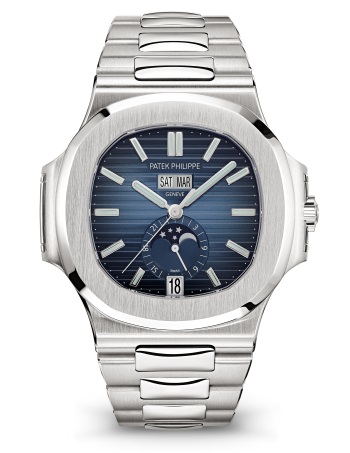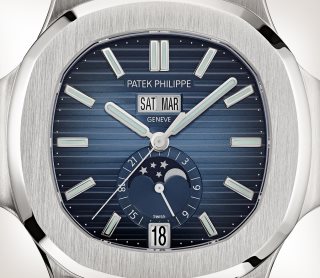Introduction
5726/1A
-
Nautilus
Self-winding
A new blue dial shading to black for the steel version
The steel Nautilus, endowed with an Annual Calendar and moon-phase display, now features a new blue dial inspired from the dial color of the original Nautilus model of 1976. Horizontal embossing and subtle grading from blue to black at the dial’s periphery create a powerful yet refined aesthetic that perfectly complements the sheen of the metal.
This elegantly sporty exterior, water-resistant to 30 m, conceals a caliber 26‑330 S QA LU 24H self-winding movement comprising 339 parts, which can be admired through a sapphire crystal case back.





































